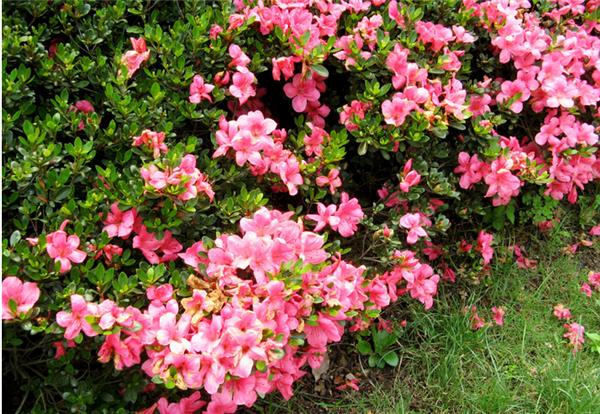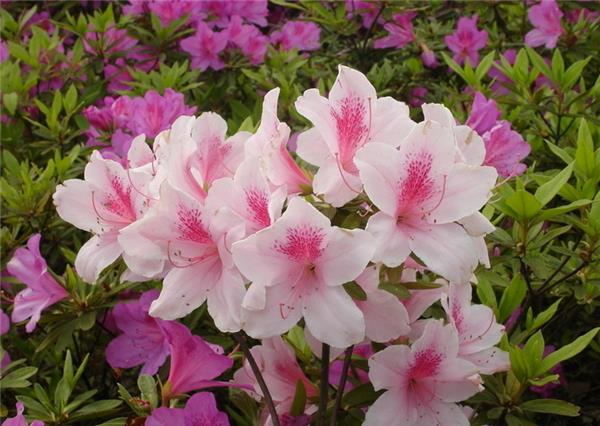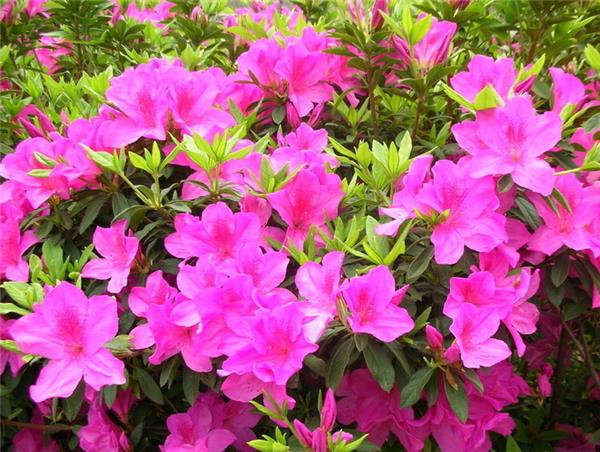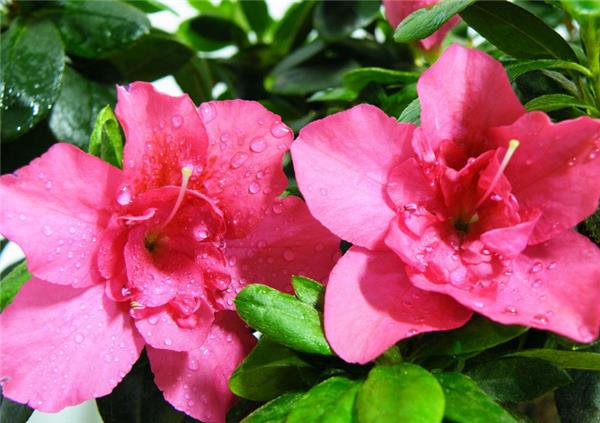What if the cuckoo leaves turn yellow?
Rhododendron is dazzling, delicate and rich, and it is a rare flower breeding plant. The cultivation of rhododendron is not difficult, just like the general flower culture, but do you know what to do if the rhododendron leaves turn yellow?

What if the cuckoo leaves turn yellow?
One: deviation of soil and water
There are more salt and alkali in soil and water in most areas of northern China. Rhododendron is a kind of acid-like soil flower. Due to the lack of soluble iron and other elements that can be absorbed by the soil, rhododendron leaves will gradually turn yellow. Acid soil should be selected when planting, and alum fertilizer and water should be often watered during the growth period.
Two: too much watering
If the basin soil is too wet for a long time, it will cause anoxia in the soil, rot part of the fibrous roots of rhododendron, hinder the normal respiration of rhododendron and the absorption of water and nutrients, and cause cuckoo leaves to turn yellow and fall off. After the cuckoo suffers, the young leaves turn pale yellow, and then the old leaves gradually turn yellow. watering should be controlled immediately, fertilization should be suspended, and the soil should be often loosened to make the soil well ventilated.
Three: too little watering
Cuckoo missed watering or long-term watering half waist water (that is, upper wet and lower dry), affecting nutrient absorption, but also easy to cause rhododendron leaves dull and dull, leaves wilting and drooping. At first, the old leaves of the cuckoo aged, and gradually withered and yellowed from the bottom up. Need a small amount of watering and spraying, so that the cuckoo gradually recovered and then turned to normal watering.

Four: excessive light
If the cool rhododendron is placed in a high temperature in summer, it will easily cause scorch on the leaf tip and edge of young cuckoo leaves, or yellow shedding of cuckoo leaves, which should be moved to a well-ventilated shady place in time.
Five: too little light
If the sun-loving cuckoo is placed in a shaded place or in a place with insufficient light for a long time, it will cause the cuckoo branches and leaves to grow, the leaves are thin and yellow, and they do not blossom or rarely bloom, so be careful to move the flowerpot to the sunny place.
Six: too little fertilizer
Rhododendron has not applied ammonia fertilizer or changed soil for a long time, and there is a lack of nitrogen and other nutrient elements in the soil, resulting in thin leaves and thin and yellow leaves. It is necessary to pour the pot in time, replace it with new loose and fertile culture soil, and gradually apply rarefied mature liquid fertilizer or compound flower fertilizer.

Seven: excessive fertilization
If you fertilize too much, the new leaves will be thick and uneven, and the dry tips of the old leaves will fall off. You should immediately stop fertilization and increase the amount of water to make the fertilizer flow out from the drainage hole at the bottom of the basin, or immediately pour the pot, rinse the soil block with water and then plant it again into the basin.
Eight: improper temperature
When the room temperature is too low in winter, the cuckoo is vulnerable to cold damage, which leads to the yellowing of rhododendron leaves and death in severe cases. If the room temperature is too high, the cuckoo transpiration is too high, and the root water and nutrients are in short supply, which will also make the cuckoo leaves yellowing. In late autumn around mid-October, the cuckoo will enter the house for maintenance. In winter, the cuckoo should be kept in a sunny place and the indoor temperature should be kept at 5 ℃ 10 ℃, but not less than 5 ℃, otherwise the cuckoo will stop growing or die.
Nine: invasion of diseases and insect pests
Rhododendron leaf spot disease caused by fungi and other bacteria is easy to cause local necrosis of leaves, yellow spots or patches, serious withered and yellow shedding of the whole leaf, and yellow-green mottle on rhododendron leaves after being infected by mosaic virus. Suffering from shell insects, red spiders and other damage, rhododendron leaves will also become local yellow withered, or even the whole leaf wilt and fall off, should be timely spray control.
Ten: strong sexual stimulation
The use of excessive concentration of pesticides in the prevention and control of diseases and insect pests, or being polluted by toxic gases in the atmosphere, or suddenly watering cold water when the temperature is high, are easy to cause cuckoo leaf tip or leaf surface to turn yellow and scorch, or even the whole rhododendron plant to die. Therefore, we should pay attention to the rational use of pesticides and try to eliminate air pollution sources.

How to prevent rhododendron leaves from yellowing
Cuckoos like loose slightly sour soil, should not be irrigated with harder water, should be more light fertilizer in the growing season. Cuckoos like a cool, humid environment, should avoid strong sunlight, protect the moist air and ensure an adequate supply of water. The cuckoo is pruned once a year after flowering, cutting off disease and insect branches, dry and withered branches, cross branches, overlapping branches, thin and weak branches, and overlong branches, so as to make the rhododendron plant shape beautiful, branch distribution reasonable, and strengthen the ventilation and light transmittance of the inner chamber, which is beneficial to the growth of rhododendron. The basin should be turned over every 2 years or so in spring or late autumn, and the basin soil should be slightly acidic sandy soil rich in humus and fertile and loose.
The basin soil should use slightly acidic sandy soil which is rich in humus and fertile and loose.
Related
- Wuhan Hospital Iron Tree Blooming Result Was Instantly Frightened by the Gardener Master
- Which variety of camellia is the most fragrant and best? Which one do you like best?
- What is the small blue coat, the breeding methods and matters needing attention of the succulent plant
- Dormancy time and maintenance management of succulent plants during dormancy
- Minas succulent how to raise, Minas succulent plant pictures
- What are the varieties of winter succulent plants
- How to raise succulent plants in twelve rolls? let's take a look at some experience of breeding twelve rolls.
- Attention should be paid to water control for succulent plants during dormant period (winter and summer)
- Watering experience of twelve rolls of succulent plants
- Techniques for fertilizing succulent plants. An article will let you know how to fertilize succulent plants.



